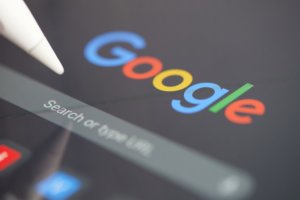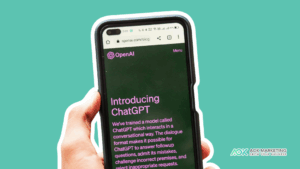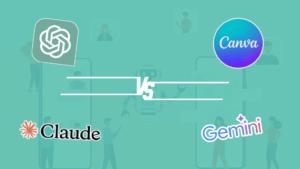In the vast digital age where visual content rules, Google Image Search stands as the go-to resource for finding images on the internet. This resource has become indispensable for students, professionals, designers, and everyday users. However, with the rise in the prevalence of image searching, there has emerged a debate that pivots on the ethics, legality, and fairness of featuring user images with attribution versus using licensed photos. This blog delves into the key aspects of this debate, offering insights and exploring the implications for content creators and users alike.
The Legal and Ethical Aspects of Image Use
The conversation around Google Image Search is incomplete without understanding the legal and ethical dimensions of using images online. When discussing user images, we’re often referring to content created by individuals that might be shared on social media, personal blogs, or other platforms. The issue arises when such images are used without the creator’s permission or are not properly attributed. Unlike user images, licensed photos are created with the intention of being distributed for a fee or under specific usage terms, which includes stock photography and other forms of paid imagery.
User Images with Attribution
Attribution means crediting the original creator of the work. It seems like a fair compromise—use images as needed, but acknowledge the creator’s effort and talent. Here’s why the argument for using user images with attribution can be compelling:
Supports content creators: Attribution can drive visibility and traffic back to content creators’ platforms, potentially leading to new opportunities and connections.
Promotes sharing culture: Encourages the sharing and remixing of ideas and images, which can be integral to the creative process.
Cost-effective: For many users, free images that only require attribution can lower the costs of projects and presentations.
However, this practice also raises concerns:
Insufficient consent: Attribution does not guarantee that the original creator gave consent for their image to be used.
Risky for users: Users might inadvertently violate copyright laws if they misunderstand the attribution rules or the image’s actual licensing status.
Limited creator control: Creators may lose control over where and how their images are used once they enter the realm of Google Image Search.
Using Licensed Photos
Licensed photos, on the other hand, come with clear terms of use, generally eliminating legal risks and ensuring creators are compensated for their work. Here’s why using licensed photos is often advocated:
Legal clarity: Licensed images provide clear instructions on how images can be used, preventing unintentional infringement.
Professional quality: Stock images are often professionally shot and edited, ensuring high quality for commercial and professional projects.
Supports industries: Paying for image licenses supports photographers and the stock photo industry, which can be essential for the sustainability of high-quality visual content.
Nonetheless, the use of licensed photos is not without its drawbacks:
Can be costly: Licensing fees can add up, especially for small businesses or individuals with limited budgets.
Generic appearance: Some criticize stock photos as lacking the authenticity or uniqueness that user-generated content often offers.
Complex licenses: Navigating different types of licenses for images can be confusing and time-consuming for users.
The Role of Google Image Search in This Debate
Google Image Search serves as the intermediary that bridges users with the images they seek. It crawls and indexes images from across the web, presenting them in search results. However, Google’s role in this debate is critical and multifaceted:
Search algorithm: Google’s algorithm prioritizes images based on relevance and quality, which could either favor user content or licensed images.
Filtering tools: Google provides tools that allow users to filter search results by usage rights, helping to mitigate legal risks.
Educating users: Google has a responsibility to educate users on image rights and usage to ensure they respect the ownership and copyright of both user images and licensed photos.
Implications for Content Creators and Users
The implications of the ongoing debate reach both creators and users in numerous ways:
Creative rights: With proper attribution and licensing, creators retain control and recognition for their work.
Access to diverse imagery: Users benefit from a wide array of choices between authentic user-generated content and professional stock photos.
Legal awareness: The debate brings to the fore the importance of understanding and respecting copyright laws.
Combining Best Practices: A Viable Solution?
Could the integration of best practices for using both user images with attribution and licensed photos be the solution we’re looking for? Employing a model that respects creators’ rights while providing the necessary freedom and resources for users might help resolve the debate. This approach will require:
Ethical sourcing: Regardless of the type of image, focus on ethically sourcing visuals by following licensing agreements and giving due credit.
Balanced use: Use a mix of user-generated images with clear attribution and licensed imagery, depending on the project’s needs and budget.
Increased awareness: Continuously educate all internet users about the importance of respecting image copyrights and the consequences of misuse.
Conclusion
The debate between featuring user images with attribution versus using licensed photos is nuanced, with strong arguments on either side. It highlights the need for a more informed and conscious approach to sourcing images through platforms like Google Image Search.
Ultimately, the choice between user images and licensed photos should account for ethical considerations, legal requirements, and project needs, always respecting the creators’ rights while providing value and clarity to users. As technology and the internet continue to evolve, so too will this debate, potentially leading to more sophisticated systems for image attribution and fair usage. The key takeaway is to remain aware, engaged, and responsible, regardless of which side of the debate you might lean towards.
As technology continues to intertwine with creative content, the balance between accessibility and creator rights becomes ever more delicate. In the end, finding the middle ground that benefits both creators and users can enhance the wealth of visual content available and foster a digital environment grounded in respect and mutual benefit.
About The Author
Marketing Team
The AOK Marketing Team is a diverse group of amazing individuals driven to help all of our clients succeed. Great people are everywhere, and we believe that people should control their workday, their work environment, and where they live. We have team members in 9 countries: United States, Canada, Egypt, Belgium, Ireland, Australia, India, Pakistan, and Hong Kong.
How can we help you?






